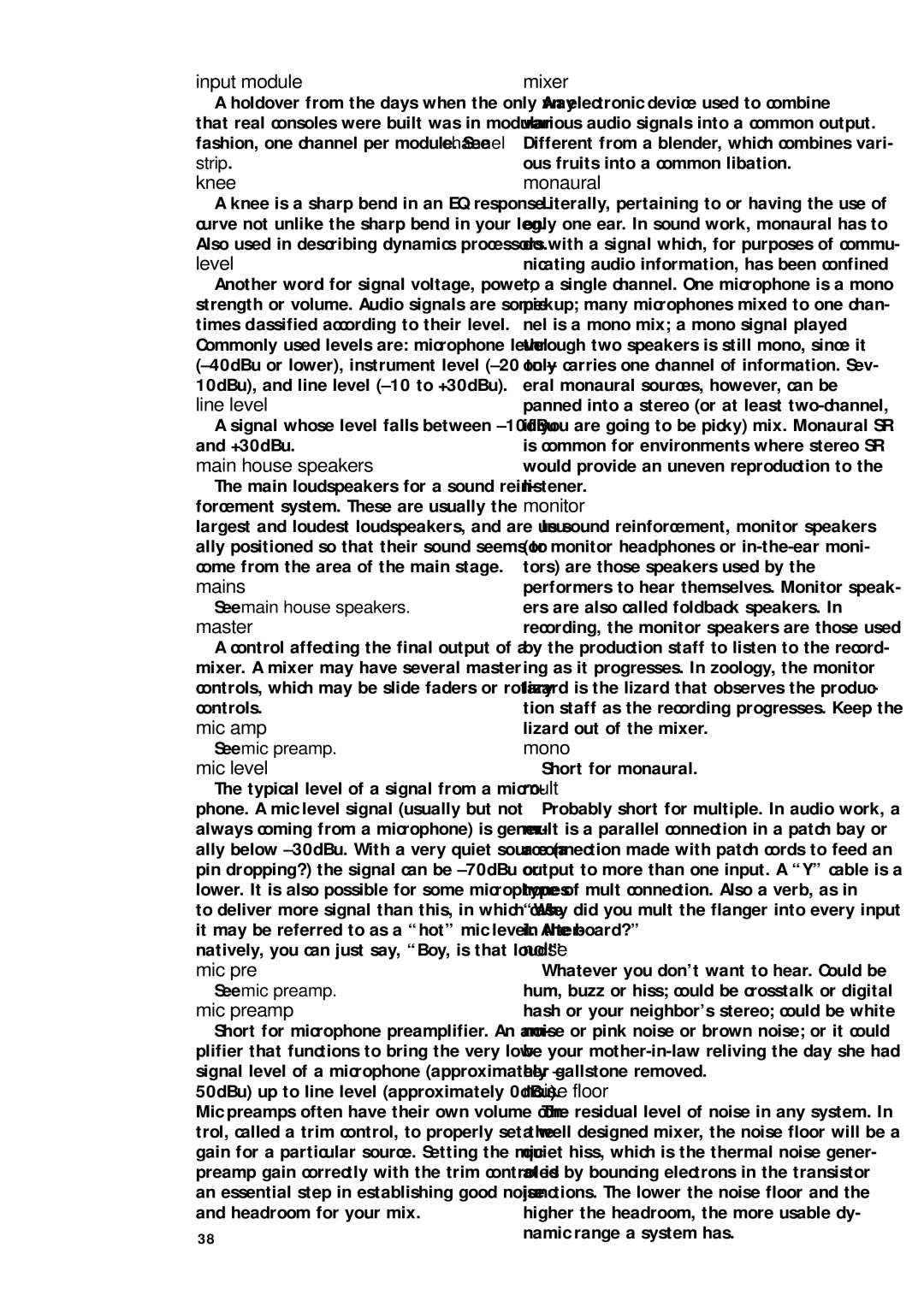input module
A holdover from the days when the only way that real consoles were built was in modular fashion, one channel per module. See channel
strip.
knee
A knee is a sharp bend in an EQ response curve not unlike the sharp bend in your leg. Also used in describing dynamics processors.
level
Another word for signal voltage, power, strength or volume. Audio signals are some- times classified according to their level. Commonly used levels are: microphone level
line level
A signal whose level falls between
main house speakers
The main loudspeakers for a sound rein- forcement system. These are usually the largest and loudest loudspeakers, and are usu- ally positioned so that their sound seems to come from the area of the main stage.
mains
See main house speakers.
master
A control affecting the final output of a mixer. A mixer may have several master controls, which may be slide faders or rotary controls.
mic amp
See mic preamp.
mic level
The typical level of a signal from a micro- phone. A mic level signal (usually but not always coming from a microphone) is gener- ally below
mic pre
See mic preamp.
mic preamp
Short for microphone preamplifier. An am- plifier that functions to bring the very low signal level of a microphone (approximately – 50dBu) up to line level (approximately 0dBu). Mic preamps often have their own volume con- trol, called a trim control, to properly set the gain for a particular source. Setting the mic preamp gain correctly with the trim control is an essential step in establishing good noise and headroom for your mix.
38
mixer
An electronic device used to combine various audio signals into a common output. Different from a blender, which combines vari- ous fruits into a common libation.
monaural
Literally, pertaining to or having the use of only one ear. In sound work, monaural has to do with a signal which, for purposes of commu- nicating audio information, has been confined to a single channel. One microphone is a mono pickup; many microphones mixed to one chan- nel is a mono mix; a mono signal played through two speakers is still mono, since it only carries one channel of information. Sev- eral monaural sources, however, can be panned into a stereo (or at least
monitor
In sound reinforcement, monitor speakers (or monitor headphones or
mono
Short for monaural.
mult
Probably short for multiple. In audio work, a mult is a parallel connection in a patch bay or a connection made with patch cords to feed an output to more than one input. A “Y” cable is a type of mult connection. Also a verb, as in “Why did you mult the flanger into every input in the board?”
noise
Whatever you don’t want to hear. Could be hum, buzz or hiss; could be crosstalk or digital hash or your neighbor’s stereo; could be white noise or pink noise or brown noise; or it could be your
noise floor
The residual level of noise in any system. In a well designed mixer, the noise floor will be a quiet hiss, which is the thermal noise gener- ated by bouncing electrons in the transistor junctions. The lower the noise floor and the higher the headroom, the more usable dy- namic range a system has.
